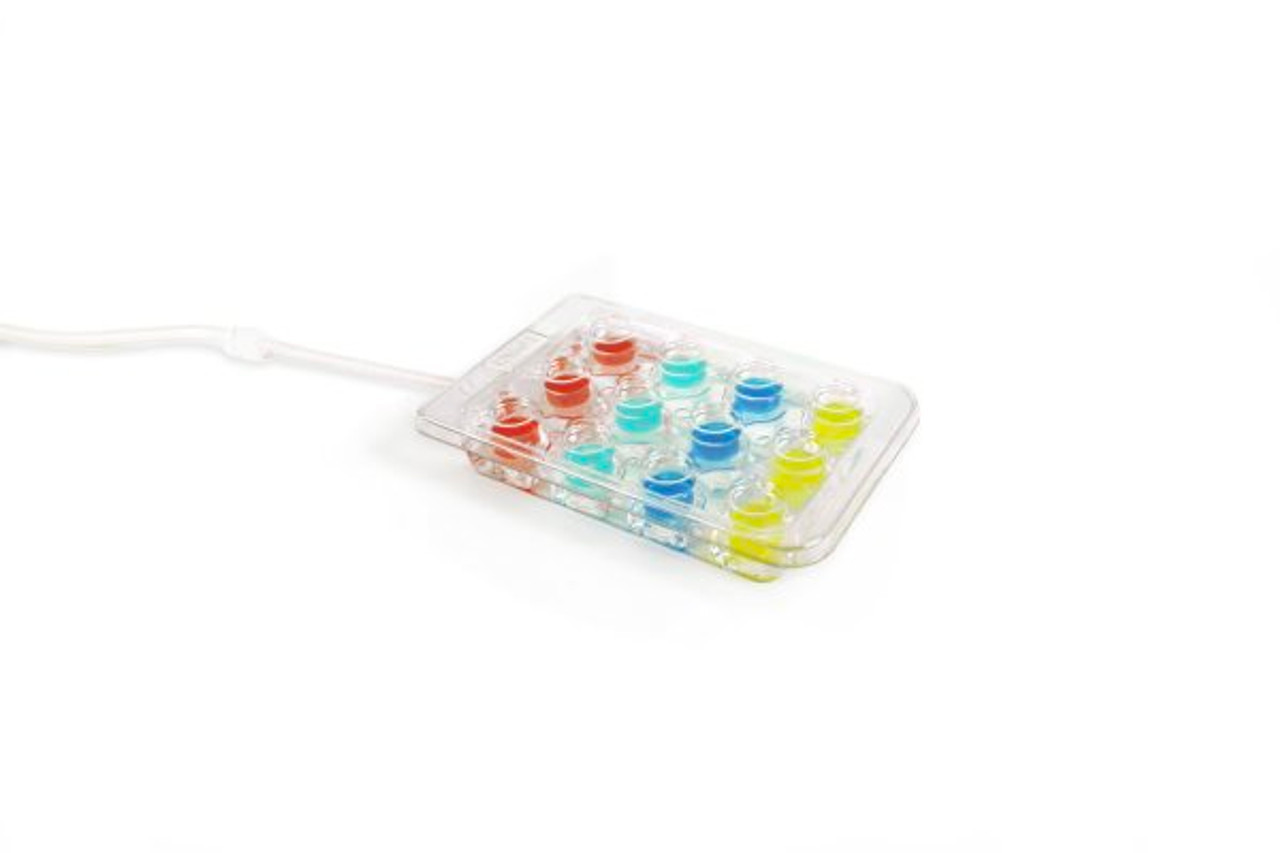Why use 3D Scaffolding for your cells?
Cell culture has been an avid field of research since the late 1800s, when an embryologist first tried maintaining chicken cells in saline.
In 1907, advances in tissue research led to the creation of primary cell culture when R.G. Harrison began growing frog nerve fibers in a dish.
In the 1940’s, the first immortalized cell line was created from mouse fibroblasts in a monolayer format.
Early methods were inefficient because scientists did not have well established techniques for excising and handling tissue for culture preparation.
See the PerfusionPal organ on a chip system pictured above
We now know that culture work may have started off on the wrong foot altogether.
Monolayer cell culture is convenient because it has quick turnover and allows easy control of the environment.
However, monolayer culture cells are extremely sensitive to changes in their environment and lack qualities seen in vivo cells for cells of the same type.
Recent advances in culture systems have shown that cultures grown in 3D scaffolds exhibit more natural cell morphology and better metabolism.
What’s more, it may actually be easier to control what cells are exposed to in culture.
SeedEZ 3D Cell Culture Systems
LenaBio’s SeedEZ 3D scaffolds are made of chemically inert glass fibers that arrange to form an artificial matrix that resembles the extracellular fibers found in the body.
Cells adhere easily to this system and to each other when grown in this fashion. It forces them to use both their cadherin and integrin receptors, as cells do in vivo.
How does that benefit you as a researcher? When cells form healthy attachments in culture, the signaling between them is more true to life.
This improves the credibility of your experimental system. Healthier in vitro cells will respond more like in vivo cells to your conditions.
SeedEZ plates have permeable microfibers that enhance reproducibility. These systems promote the exchange of gasses and metabolites because they prevent clumping.
This makes SeedEZ an ideal system for drug experiments that involve repeated dosing of a culture.
These assays are reliable and durable and can be used again and again without damage to the microfibers or cell culture.
Cells disperse in the scaffold even between plates, and the scaffold allows movement of drugs and metabolites within the dish easily.
You don’t have to worry about your treatment sticking in one spot…less waste, less labor than ever before.
Comparisons to Other Cell Culture Systems
Other 3D systems exist and are certainly worth considering! Spheroid models and hydrogels are becoming increasingly common, but these do not have the same bang for the buck as 3D scaffolds do.
In spheroid culture, more interior cells can be shielded from exposure to the intended variables, and from gas and metabolite exchange.
The Perfused Organ Panel systems combine the scaffold inside a regulated plate environment using artificial blood. This can create an extremely accurate model system that behaves like tissue.
Custom hydrogels usually lack the sophistication of commercial scaffolds. In terms of labor, it can be less costly to use SeedEZ for your cultures.
It’s wise to keep track of lot numbers when using scaffolds to ensure reproducibility, but there are more pros than cons to using them for 3D cultures.
Research Using SeedEZ 3D Scaffolds
The 3D system allows a more true-to-life representation of biological situations. One study looked at the growth of breast cancer cells using the PerfusionPal system with SeedEZ scaffolding.
The use of a scaffold in this study resulted in breast cancer cells with higher metabolic activity than in monolayer culture. This enhanced the effect of Tamoxifen at higher doses.
Demonstration of How 3D Conditions Improve Culture Work
Another study on hepatocyte cells compared growth and metabolism using the PerfusionPal system and artificial blood.
This study was able to demonstrate increases in oxygenation and cellular respiratory activity using the artificial blood and scaffold in PerfusionPal.
This design is incredibly efficient. It uses very small amounts of media and other resources to create a uniform and accurate model of tissues.
The takeaway:
3D culture systems can enhance exchange and improve cell metabolism.
Overall, cells grown with scaffolds have more natural looking morphology, and the open structure reduces variability in metabolite delivery.
Artificial blood enhances oxygen and metabolite delivery to an even greater extent in these model systems.
Browse Our Catalog for 3D Culture Supplies
Stellar Scientific carries the LenaBio line of PerfusionPal systems and SeedEZ 3D Scaffolds.
We also offer a number of related products and accessories, from reusable blood to GradientEZ cell migration assays.
Want to try spheroid culture in spite of all the hype about other systems? We have SpheroSeev Scaffolds for top-quality culture production, and don’t forget to pick up plates that are fit for your experiment while you’re here.
As always, you can head over to our contact us page and reach out to a representative if you don’t see exactly what you want!
Footnotes:
__________________________
Fang, Ye, and Richard M. Eglen. “Three-dimensional cell cultures in drug discovery and development.” SLAS Discovery, vol. 22, no. 5, June 2017, pp. 456–472, https://doi.org/10.1177/1087057117696795.
Hudu, Shuaibu Abdullahi. “Cell culture, technology: Enhancing the culture of diagnosing human diseases.” JOURNAL OF CLINICAL AND DIAGNOSTIC RESEARCH, 2016, https://doi.org/10.7860/jcdr/2016/15837.7460.
Liu, Peng, et al. “Validation of a 3D perfused cell culture platform as a tool for humanised preclinical drug testing in breast cancer using established cell lines and patient-derived tissues.” PLOS ONE, vol. 18, no. 3, 16 Mar. 2023, https://doi.org/10.1371/journal.pone.0283044.
Richter, Magdalena, et al. “From donor to the lab: A fascinating journey of primary cell lines.” Frontiers in Cell and Developmental Biology, vol. 9, 22 July 2021, https://doi.org/10.3389/fcell.2021.711381.
Shoemaker, James T., et al. “A 3D cell culture organ-on-a-chip platform with a breathable hemoglobin analogue augments and extends primary human hepatocyte functions in vitro.” Frontiers in Molecular Biosciences, vol. 7, 19 Oct. 2020, https://doi.org/10.3389/fmolb.2020.568777.


